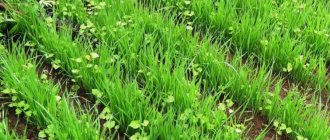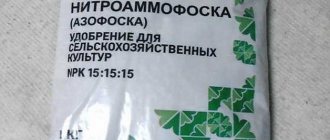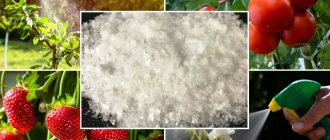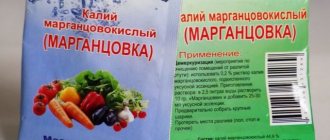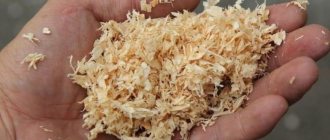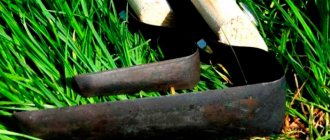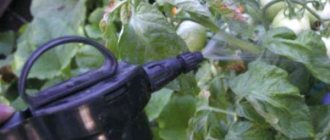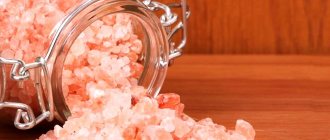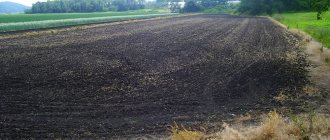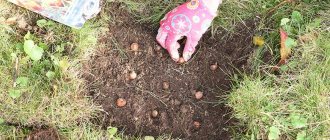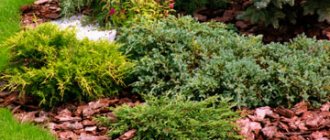Don’t know which fertilizer is unique and effective? And on top of everything else, does it qualify as organic? Then the choice should be sapropel. The distinctive features of this application are its multilayer nature and the presence of almost all micro and macroelements necessary for the soil.
You can buy it or collect it yourself if you know where and how to get fertilizer. Dead aquatic plants, living organisms and bottom soil participate in the formation of sapropel. Top dressing is popular among gardeners due to its natural origin and excellent results.
Sapropel - description and properties
There are several types of natural fertilizer. Lake sapropel is the most valuable for its qualities and properties. Because the production occurs naturally at the bottom of the lake, where there is always:
- water renewal occurs;
- the liquid is always fresh;
- oxygen access is limited;
- the chemical composition is formed over several decades.
Accordingly, the component part of the substance consists of hundreds of micro and macroelements with beneficial properties. But sapropel is not sold immediately after extraction. It is dried until it turns into a powder mass.
Due to this, it becomes light and convenient for packaging, application, and dilution. The drying technology occurs in such a way that all useful substances are preserved and the organic mixture does not rot.
Sapropel contains enzymes and amino acids. Also an excellent vitamin complex: P, B, D, E, C. The basis is made up of natural elements:
- phosphorus;
- potassium;
- sodium and a large amount of humic acids, which is an additional advantage: neutralization of pathogens.
But the percentage of useful substances that are included in sapropel changes. It depends on where the organic mixture was directly extracted.
What is included in sapropel
The components that make up a fertilizer vary depending on where and how the substance was formed. However, the basic composition always includes three components: organic, biologically active and mineral. Depending on their proportional content, four types of sapropel are distinguished:
- Carbonate.
- Siliceous.
- Glandular.
- Organic.
The latter is of greatest interest for agriculture. It contains ash in a volume of no more than 30%.
The organic part is represented by the remains of zooplankton and aquatic plants, benthos at different stages of decomposition of humic substances, and biopolymers. The biologically active part is the waste products of microorganisms - vitamins, amino acids, alcohols, enzymes, hormone-like substances, antibiotics. The mineral part of sapropel is represented by calcium and silicon oxides and a huge amount of trace elements (half from the periodic table).
Mechanism of action
The natural ooze comes in a variety of forms. It can be a powdery mass or liquid. And also paste-like, granular. Organic components and valuable substances are preserved in all specified forms.
In the form of granules and powder, sapropel is directly a fertilizer. Paste and liquid - as a medicinal form for people or for large plots of land during the reclamation period.
At its core, the substance is silt, which has been dried in a special way. Fossil is an inexhaustible source of vitamins, enzymes and minerals. The beneficial effects of microelements ensure high productivity of fruit and berry crops.
Fertilizer release form
Sapropel is a fairly common fertilizer, which is produced in various forms, adapted to the type of use:
- Fine-grained free-flowing. The substance is a gray powder with a bluish tint. Packaging varies from 1 liter to 10 liters.
- Granulated. Granules of various shapes are formed from the dried sapropel mass. The packages have different volumes, but the structure of the fertilizer inside is always the same.
- Tableted. Dry lake sludge is pressed into tablets with a diameter of up to 3 cm, which have to be crushed when used.
- Semi-liquid. The drug is available in the form of a paste, which is convenient for targeted use.
- Liquid. It is a ready-made mixture for fertilizing certain crops.
See also
How to easily uproot bushes on your property, 3 ways to get rid of plants
Read
Benefits of use
When purchasing sapropel as a fertilizer, always pay attention to its benefits for plants and soil. And, despite the fact that each type differs from each other in composition (percentage of substances), the chemical composition has the same positive properties.
The benefits of sapropel are:
- The appearance of looseness in clay soils if the substance is used on clay soils.
- After adding sludge to the soil, sapropel remains in it for up to three years. Sometimes up to 5 years. It has a stimulating effect on plant growth and development.
- Proves its healing properties in the presence of fungal infections, nitrates, and other diseases.
- Helps improve soil quality. Especially in cases where the soil is poor. The fertilizer mixture forms a fertile layer.
- If you use a sludge product with other additions, moisture is retained and humus increases.
But this list concerns exclusively soil. What does sapropel do for plants? If applied under garden flowers, it will increase and last for a long time.
When used for annual crops, organic matter of this class provides plants with useful microelements throughout the entire growth period. There is an increase in fruiting, an improvement in the taste of the fruit, and juiciness.
Recommended as a growth and development accelerator for young plants. It has been repeatedly noted by users that the harvested crop can be stored for a long time without compromising taste or appearance.
Types of sapropel
Fertilizers made from sapropel have different chemical compositions, which makes it possible to create different types of fertilizing. It depends on the geological region in which the raw materials are mined.
The soil at the bottom includes components of mineral and organic properties. According to their content, sapropels are:
- siliceous;
- calcareous;
- mixed.
The content of organic components allows the fertilizer to be divided into:
- organic, ash 30%;
- organomineral, ash 30-50%;
- mineral-organic, ash 50-70%; 0
- mineralized, ash 70-85%.
Another division of sapropel fertilizers into forms: liquid, paste, granular, bulk. The purpose for which Sapropel will be used depends on this. Fertilizers are traditionally presented in bulk and granular forms. The product in liquid and paste form is used to restore large areas.
The types of reservoirs determine the types of sapropel raw materials. Various sapropel deposits are being developed in Russia:
- lake;
- peat;
- bog;
- marine;
- interglacial.
The main bottom soil processed for fertilizers is lake and peat soil. The extracted humus is processed until it turns into an excellent fertilizer, Sapropel.
Need to know! They begin to extract sapropel in May, when the water level is low, and the bottom soil after the winter “hibernation” of the reservoir has the greatest environmental value.
Features of application
After determining the purpose of the fertilizer substance called sapropel, the farmer decides whether or not to use the mixture and what type is needed. But to obtain results, successfully enrich the soil and increase the yield, knowing the type and properties of the fertilizer is not enough.
You should carefully study the instructions for use. Especially the section where preparation options and dosage of the drug are indicated.
For soil
Growing a crop and still getting good results is not always easy. For efficiency, it is worth considering how to enrich the soil. What minerals and vitamins are needed.
Since sapropel for the garden does not pose a threat, it has a whole list of advantages over other fertilizer mixtures - it is recommended to add it to the soil.
Provides moisture exchange, breathability, nutrition with microelements to enrich and normalize soil pH.
All work is carried out in the fall during digging. During the winter, the beneficial qualities will be enhanced. The result of application: improved plant growth and development, healthy appearance, high yield.
Granular or powder type of product is used. The depth during digging is at least 10 cm. Calculation of deposits: 3 liters per hundred square meters. A large dosage has a detrimental effect on the composition of the soil - severe oxidation.
It is recommended to mix with manure to enhance the immune system.
For vegetable crops
The main rule when applying sapropel: compliance with doses and territory. If seedlings rather than seedlings are used, the substance is applied to open ground.
Dose calculation: earth/sapropel 1 to 1. No more than 3 liters of product should be used per square meter.
If feeding is necessary: the dosage of the product is reduced to 1/3. For other crops the following scheme is used:
| Culture | Proportions | Ingredients |
| Vegetables | 1/1/2 | Compost/humus/sapropel |
| Cabbage, leafy | 2/4/3 | Soil/sand/feeding |
| Eggplants, tomatoes, peppers | 1/2/7 | Sapropel/sand/soil |
| Melons (including cucumber, zucchini) | 4/6/3 | Sand/earth/fertilizer |
| Potato | 2-5 kg per sq. m | No additional ingredients |
Using sapropel when growing seedlings
If you dissolve 50 ml of sapropaste in 1 liter of water, you can successfully germinate seeds in the solution or soak tubers and bulbs before planting.
Powdered, granulated or tableted sapropel is an excellent material for preparing seedling soil mixtures. To do this, it is most often added to the turf soil in a ratio of 1:3. Other options can be used:
- 2 parts earth, 4 parts sand and 3 parts sapropel - for cabbage seedlings;
- 7 parts of earth, 1 part of sapropel and 2 parts of sand - for seedlings of peppers, eggplants and tomatoes;
- 6 parts earth, 4 parts sand, 3 parts sapropel - for seedlings of cucumbers, watermelons or melons.
Some manufacturers of ready-made soils for seedlings add sapropel to their soil mixtures:
| Trademark | Purpose of the soil | average cost |
| "Good Ground" | Universal | 49 rubles for 5 l |
| "Biogrunt Ecoflora" from | Separate formulations for roses, violets, vegetables, citrus fruits, orchids, palms and ficus | 75 rubles for 5 l |
| "Saprogrunt" from | Universal | 70 rubles for 5 l |
| "Veltorf" | Universal | 150 rubles for 25 l |
Adding sapropel to seedling mixtures increases the germination rate of seeds and promotes the formation of strong seedlings that are resistant to drought and disease.
Rules for extracting fertilizer with your own hands
If you want to purchase fertilizer that is 100% natural, you can use it yourself. Since extracting sapropel with your own hands is not difficult.
The main condition is the presence of a clean reservoir of fresh water. If we talk about production, then special equipment is used that facilitates the process of obtaining bio-raw materials. It can be obtained without such technical support.
To implement the artisanal method of obtaining material, prepare for the difficulties that arise during transportation and during drying. The principle of mining is to use a pitchfork to lift the silt from the bottom. You don't have to go deep.
There is also useful sapropel at the beginning of the shore. It is better to transport by car. Then pass the material through a sieve.
Advantageous quality winter production of biological raw materials. It is considered not only healthy, but also clean, without unnecessary waste.
What it is?
Sapropel is a natural bio-raw material containing many useful components. It is formed at the bottom of reservoirs and is mined ready for use.
Note. Sapropel cannot be found in ponds or rivers - it simply does not survive there.
This raw material consists of tiny particles of plants and animals and decomposes at depth. Sapropel is used to fertilize cultivated plants, and is valued for its rich mineral composition. There is sodium, ash, phosphorus, copper, as well as organic components, vitamins, enzymes.
There are several types of this valuable natural raw material, each of which has its own application characteristics.
Strawberries at home all year round! These veneers are 100 times better than false teeth! And they cost pennies! Up to 15 kg of strawberries every month! Dental veneers for pennies! Up to 15 kg of strawberries every month! The famous overlay veneers are now in Russia!
Sapropel is a special sorbing filter: it contains a huge number of bacteria that continue to work even in cases of severe contamination and in the complete absence of oxygen.
Main differences from sludge
This material is often confused with silt. However, the latter, unlike sapropel, is formed in rivers and ponds. But it is less valuable in terms of the content of organic components.
| Signs | Sapropel | IL |
| Color | Gray-black | Pink, olive |
| Organic content | Up to 97% | No more than 20% |
| Change in state of aggregation during drying or freezing | Ceases into stone | Becomes a fine powder. |
conclusions
There is no definite opinion about the benefits and necessity of adding sapropel. This is proven by reviews from gardeners, who indicate the difficulty of obtaining it using an artisanal method. Purchasing fertilizer is also not always supported due to the cost of the substance.
1/3 of the reviews remain positive, since after using the material there is always a large number of fruits.
A refutation of the negative words addressed to the fertilizer composition about the cost and replacement with other organic products can be considered the fact that it is not necessary to apply sapropel annually. After all, its validity period reaches 3-5 years.
Reviews from gardeners about the use of sapropel
Sapropel is not as well known as other organic fertilizers. Many gardeners have undeservedly forgotten about it, or it is simply rarely found on sale. However, those who are lucky enough to find high-quality fertilizer grow crops that are the envy of everyone they know.
Omsk resident Maria Agapkina: “Sapropel saved my roses. The flowers fell ill with an unknown illness; not a single purchased product helped. I diluted sapropel tar (100 ml in a bucket of water) and watered the bushes from a watering can. Covered with film. In the spring I processed it again and applied fertilizer to the bush. The roses bloomed beautifully all season! I also add fertilizer to the tomatoes. I have never seen such harvests in my entire life. Large, beautiful, I don’t have time to take pictures. I process the potatoes before planting, I forgot about the beetles.”
Tyumen resident Galina: “I accidentally saw sapropel on a store shelf. Ours, real, Tyumen! I feed flowers and seedlings at the dacha. Diseases and pests are avoided. The plants are strong and beautiful.”
Sapropel is a unique organic fertilizer that is extracted from the bottom of lakes. The rich composition helps restore the fertility of even the poorest soils. It is suitable for fertilizing all garden crops.
How to extract sapropel manually?
Extraction of sapropel using manual mini dredgers
You can get sapropel yourself. This is done on the shallows of wetlands. To collect fertilizer you need to take a pitchfork. They need to be modified. A special wire is put on them, from which a mesh is formed. The transverse diameter of the wire must be at least 0.2 millimeters. Sapropel does not lie at great depth, and a large amount of the substance can be dug up with a fork and wire. For mining, it is necessary to choose environmentally friendly areas, since sapropel can absorb heavy metals and other harmful components.
You can extract sapropel using mini-dredgers. This is a device whose operating principle is no different from its larger counterpart, but the scale of production is smaller. The weight of the machines ranges from 20 to 200 kg. In one day of work you can collect sapropel on a small plot of land. The cost of sapropel obtained in this way is 10 times less than the finished material purchased in stores.
Bottom line
Sapropel production is a profitable business in our country. It is mined on an industrial scale and for individual needs. Silty bottom sediments effectively reduce the acidity of clay soils, increase the fertility of sandstones and improve the structure of neutral soils. The fertile layer is enriched with humus and useful microelements. Sapropel, unlike other organic matter, lingers in the soil for at least 3 years - it is not washed out by precipitation.
The use of sludge fertilizer significantly reduces the content of heavy metal salts in vegetable crops. This is explained by the property of sludge to absorb harmful substances. However, it is not recommended to extract bottom silt from reservoirs near the highway or treatment facilities - it contains many harmful substances, which it quickly absorbs.
Organic fertilizers are in increasing demand among gardeners and in the industrial production of horticultural crops due to their beneficial properties and safety for human health. Sapropel has an undoubted advantage among all types of organic matter. This environmentally friendly fertilizer contains all the necessary nutrients and is completely safe for plants.
Silt fertilizes and structures the soil, helps retain moisture on sandstones and is not washed out by precipitation and groundwater. You can buy sludge at gardening stores or prepare fertilizer yourself if there is a fresh body of standing water near the garden. It should be emphasized that river silt differs from sapropel in its composition and beneficial properties.
Positive aspects of the sapropel composting process
Composting is the process of mixing sapropel with humus. This technique is used to improve the quality of fertilizer and rapid absorption by the soil. It is the nitrogen-containing components of the composition that react favorably when mixed with humus. The following scheme is used as a proportion: two parts of sapropel to one part of humus or manure. All material is laid in layers and matures within three months.
In addition to manure and sapropel, you can add peat and potassium-phosphorus fertilizers. In finished form, such fertilizers promote rapid growth, and they also contain all proportions of the components. Plants will withstand weather conditions more resistantly.
Application in agriculture
Sapropel can be used both in gardening and gardening, adding it to almost all crops that are not afraid of containing a large amount of organic matter in the soil. Adding sapropel to cucumbers, tomatoes, zucchini, potatoes, and melons will have a very good effect. All fruit and berry trees will respond gratefully to such feeding. In the flower garden, roses, clematis, lilacs, peonies, and dahlias will be most welcome to use fertilizer from bottom silt. But marigolds and nasturtium, due to the abundance of organic matter in the soil, can go “into the tops” and refuse to flower.
Sludge extracted from a reservoir can be applied directly to the soil, diluted with water, like mullein, it can be mixed fresh with compost, and it is best to compost and apply to the soil after fermentation . Plants react to the use of such fertilizing:
- lengthening the timing and increasing the splendor of flowering;
- improving the quality of the crop and increasing its quantity;
- accelerating growth and increasing the volume of green mass;
- seedlings show high growth rates and good survival rate;
- immunity increases and the susceptibility of plants to pests and diseases decreases.
Bottom sludge is an excellent organic fertilizer, which is almost always on hand for those who maintain farms near rivers or lakes. This true gift of nature can be successfully used to increase productivity, and your garden will look like it’s on the cover of a magazine!
Application as fertilizer
River silt has been used as fertilizer since ancient times. It is enough to recall the lessons from the history of the Ancient World. As is known, after the flood the Tigris and Euphrates rivers left behind large areas of fertile silted lands, which made it possible to obtain good grain harvests in these areas. Thanks to such natural conditions, the powerful state of Mesopotamia developed in the coastal area, whose name translated from Greek means “among the rivers.”
